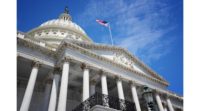At the direction of President Trump, the Office of the U.S. Trade Representative (USTR) has increased the rate of additional duty imposed since September 2018 on approximately $200 billion in goods imported from China, from the current 10 percent to 25 percent. USTR also announced that a process will be established for businesses affected to request exclusions from these additional tariffs.
Now, 25 percent in additional tariffs will apply to products in categories covered under the third list announced by USTR as part of its Section 301 investigation, known as list or tranche 3. In earlier comments the Security Industry Association (SIA) submitted to USTR, SIA identified 29 product categories included on this list that impact the security industry, including key security products that are widely imported such as alarm and access control components, cameras and smoke detectors.
It is possible the administration may impose additional duties on all remaining products imported from China not currently subject to them (up to $325 billion in additional goods) in the near future. Retaliatory measures by the Chinese government in response to these developments are likely, and could include additional tariffs on U.S. goods, tariffs on U.S. services and various types of non-tariff trade barriers.
These developments are the result of a breakdown in trade negotiations between the U.S. and China (thought to be nearing resolution), as the U.S. government seeks reforms to Chinese trade and business practices.
SIA says it will continue to closely monitor this issue and communicate with members regarding the forthcoming exclusions process and possible tariffs on additional product categories. In the meantime, the association is asking for any input from members regarding the impact of these changes, to help guide engagement with policymakers on behalf of the industry.
Learn more about the impact these tariffs will have on the security industry here. Stay up to date on what legislation SIA is tracking at the state and federal level with the Security Policy Brief.






